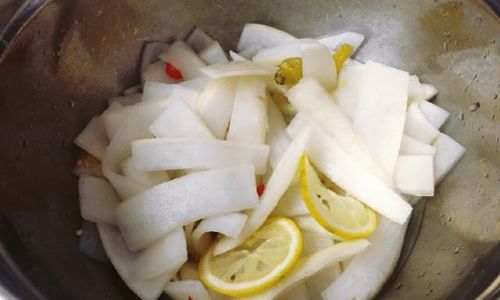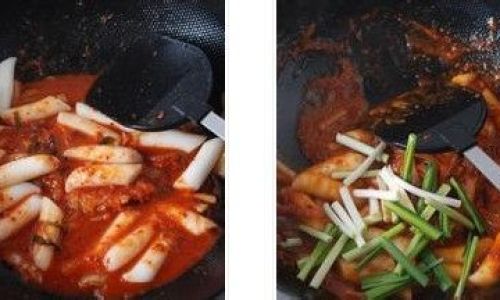Introduction
Daikon radish, also known as white radish or Chinese radish, is a versatile vegetable cherished for its crisp texture and mild, slightly sweet flavor. Its long, cylindrical shape and creamy white hue make it a staple in many Asian cuisines, where it is often used in stir-fries, soups, and salads. However, one of the most beloved preparations of daikon radish is pickling, a preservation technique that enhances its natural sweetness and adds a tangy, refreshing zest. Pickled daikon radish can be enjoyed as a side dish, a topping for noodles or rice, or even as a crunchy addition to sandwiches and wraps. In this article, we will delve into the art of pickling daikon radish, exploring various methods and tips to ensure a delightful, flavorful result.
Understanding the Basics of Pickling
Before diving into specific recipes, it’s crucial to understand the fundamentals of pickling. Pickling involves submerging food in a brine or vinegar solution, often containing spices and herbs, to preserve it and add flavor. The acidity of the vinegar or the salt content in the brine inhibits the growth of harmful bacteria, thereby extending the shelf life of the food. In the case of daikon radish, pickling not only preserves the vegetable but also transforms its texture and taste, making it more palatable and enjoyable.

Choosing the Right Daikon Radish
The success of your pickled daikon radish starts with selecting the right ingredient. Look for firm, fresh daikon radishes with smooth, unblemished skin. Avoid those that are soft, wrinkled, or have spots, as they may be past their prime. The size of the daikon can vary, but for pickling, medium-sized radishes tend to be easier to handle and offer a balance of crispiness and flavor.
Preparing the Daikon Radish
Once you have your daikon radishes, the next step is to prepare them for pickling. Start by washing the radishes thoroughly under running water to remove any dirt or residue. Peel the skin if it’s thick or if you prefer a smoother texture. Then, slice the daikon into matchsticks, thin rounds, or julienne strips, depending on your preference and the recipe you’re following. The thinner the slices, the quicker the pickling process and the more intense the flavor will be.
Creating the Pickling Brine
The brine is the key to a successful pickling process. It provides the acidity and seasoning that will flavor and preserve the daikon. Here are a few popular brine recipes:
-
Vinegar-Based Brine:
- Ingredients: 1 cup rice vinegar, 1/2 cup sugar, 1/4 cup salt, 2 cups water, and a handful of spices like garlic cloves, chili flakes, and ginger slices.
- Instructions: In a saucepan, combine the vinegar, sugar, salt, and water. Heat until the sugar and salt are fully dissolved. Add the spices and let the mixture cool completely before using.
-
Salt-Based Brine (Fermented Pickles):
- Ingredients: 2 tablespoons sea salt, 2 quarts filtered water, and a fermentation weight (like a small glass jar filled with water).
- Instructions: Dissolve the salt in the water. Place the sliced daikon in a clean, non-reactive fermentation vessel (like a glass jar). Pour the brine over the daikon, ensuring it’s fully submerged. Use the fermentation weight to keep the daikon under the brine. Cover the jar loosely with a cloth or lid to allow gas exchange. Ferment at room temperature for 3-7 days, tasting daily until you reach your desired level of tanginess.
-
Soy Sauce-Based Brine:
- Ingredients: 1 cup soy sauce, 1/2 cup rice vinegar, 1/4 cup sugar, 2 cloves garlic, 1 piece of ginger (sliced), and 1 red chili pepper (sliced).
- Instructions: Combine all ingredients in a saucepan and heat until the sugar is dissolved. Let the mixture cool before using. This brine offers a savory, umami-rich flavor to the pickled daikon.
Pickling Techniques
Now that you have your daikon and brine ready, it’s time to pickle. Here are a few techniques to consider:
-
Quick Pickling: For immediate enjoyment, use a vinegar-based brine and let the daikon sit in it for at least an hour before refrigerating. The longer it sits, the more flavor it will absorb.
-
Refrigerator Pickling: Place the daikon and brine in a clean, airtight container and refrigerate for at least 24 hours. This method allows the flavors to meld and develop over time.

-
Fermented Pickling: As mentioned earlier, fermentation is a longer process that requires patience but yields uniquely tangy and probiotic-rich pickles. Monitor the fermentation closely to avoid over-fermentation, which can lead to an unpleasant taste and texture.
Storing Pickled Daikon Radish
Proper storage is essential to maintain the quality and flavor of your pickled daikon. Once pickled, transfer the daikon and brine to clean, airtight containers and store them in the refrigerator. Pickled daikon can last for several weeks to months, depending on the pickling method and storage conditions. Always use clean utensils when removing pickles to avoid contamination.
Serving and Enjoying Pickled Daikon Radish
Pickled daikon radish is incredibly versatile and can be enjoyed in numerous ways. Here are a few serving suggestions:
-
As a Side Dish: Serve pickled daikon alongside grilled meats, stir-fries, or sushi for a refreshing contrast in texture and flavor.
-
In Salads: Add pickled daikon to mixed green salads or Asian-inspired noodle salads for a crunchy, tangy boost.
-
In Sandwiches and Wraps: Use pickled daikon as a crunchy filling in sandwiches, wraps, or rice paper rolls.
-
Condiment: Offer pickled daikon as a condiment at your next barbecue or potluck. Its tangy, slightly sweet flavor pairs well with grilled foods.
Conclusion
Pickling daikon radish is a delightful way to preserve and enhance this versatile vegetable. By following the steps outlined in this article—selecting fresh daikon, preparing it correctly, crafting a flavorful brine, and storing it properly—you can create pickled daikon that is crisp, tangy, and bursting with flavor. Whether you prefer a quick vinegar pickle, a fermented delight, or a soy sauce-infused treat, pickling daikon offers endless possibilities for culinary creativity. So, why wait? Gather your ingredients, roll up your sleeves, and start pickling your way to deliciousness today!






0 comments